The 30 Best Kitchen Tips Ranked For Home Cooking Success
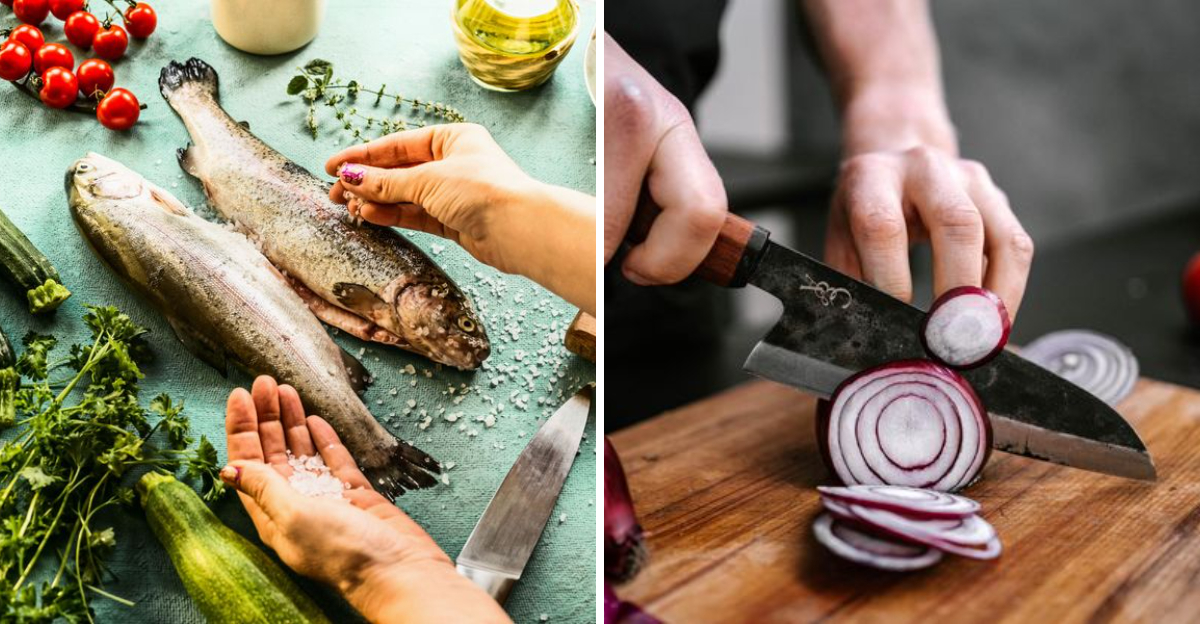
Simple tricks that make a huge difference—no culinary degree required. Whether you’re a seasoned home cook or just learning your way around a spatula, the right kitchen tips can make everything easier, faster, and tastier. From meal prep shortcuts to flavor-boosting hacks, here are the top 30 kitchen tips ranked for helping you win dinner every night.
1. Read the entire recipe before starting
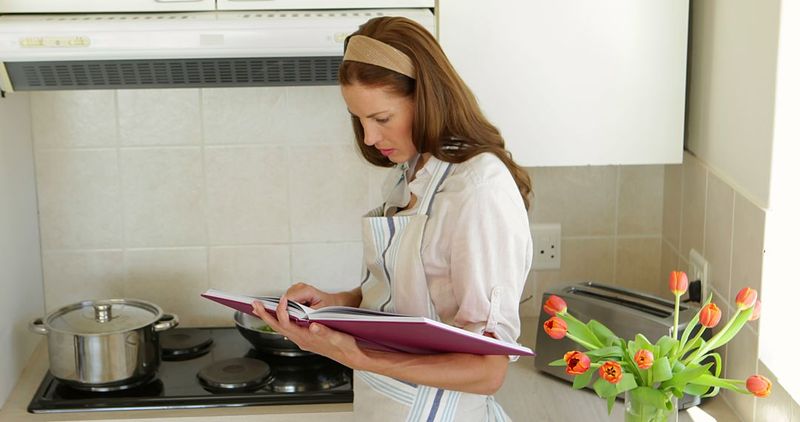
Before diving into cooking, take a moment to read the entire recipe. This simple step can save you from unexpected surprises halfway through. Knowing what ingredients and tools you’ll need beforehand allows for a smoother cooking experience.
By understanding the steps ahead of time, you can anticipate transitions and manage your time efficiently. This practice not only builds confidence in the kitchen but also reduces the chance of errors.
Consider it as your personal roadmap to culinary success, paving the way for delicious, well-executed dishes every time.
2. Always preheat your oven
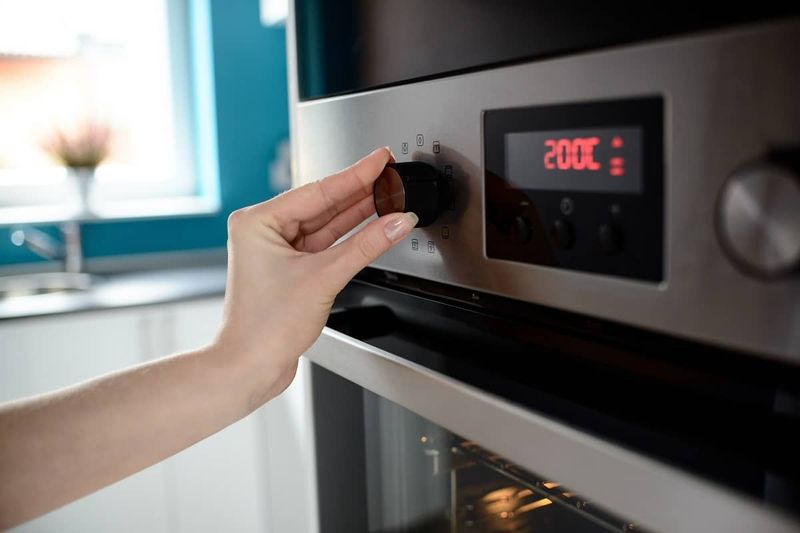
Preheating the oven is an essential step for achieving consistent cooking results. When you place food in an oven that’s at the right temperature, it begins cooking evenly from the outset, leading to better texture and flavor.
Skipping this step can result in uneven cooking, with some parts being overcooked or undercooked. This may alter the intended balance of flavors and textures.
For baked goods, a preheated oven ensures that items rise properly, creating the desired structure and crumb. It’s a small step with a big impact on your dishes.
3. Don’t overcrowd the pan
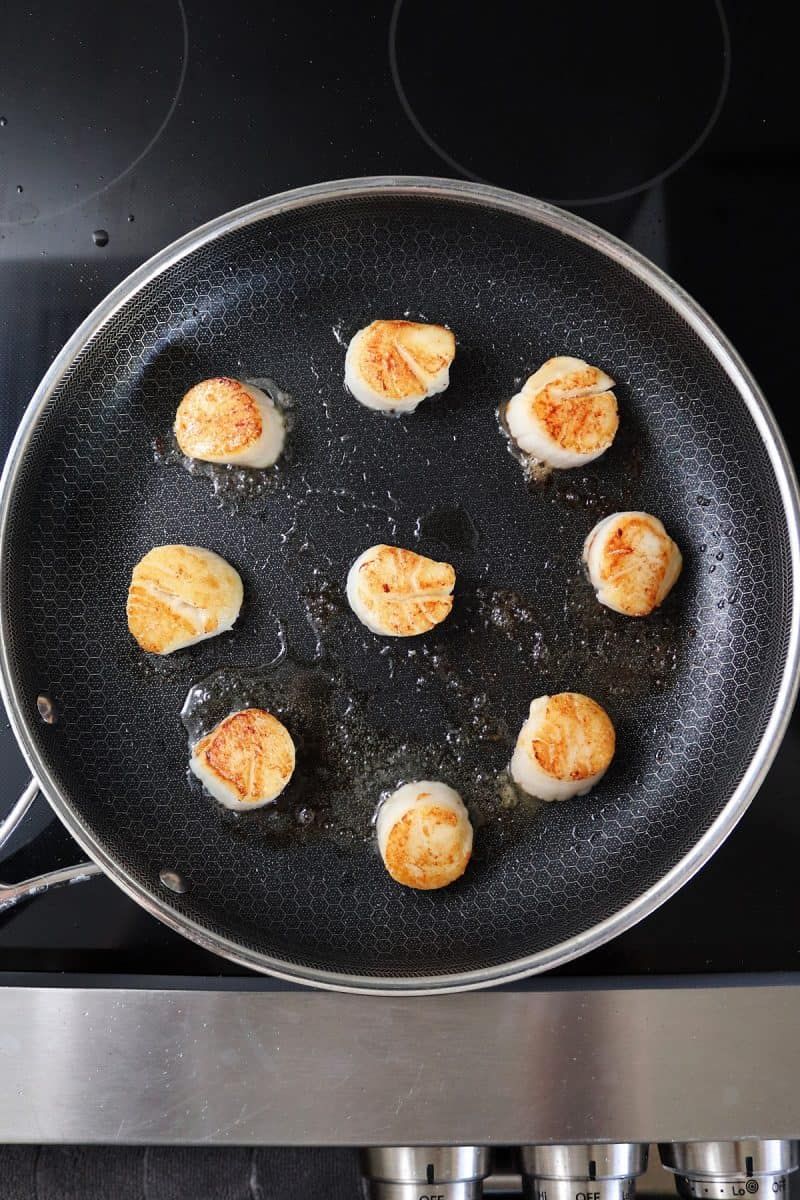
Crowding the pan can lead to steaming instead of browning, affecting the texture and flavor of your food. When food items are too close together, moisture gets trapped, preventing proper searing.
By giving each piece of food its personal space, you allow it to sear, enhancing flavor and creating a delectable crust. This technique is particularly important for meats and vegetables.
Maintaining the right balance in the pan fosters an environment where food can caramelize, a process that enriches your dishes with complex, savory notes. Let your pan breathe for the best results.
4. Season as you go
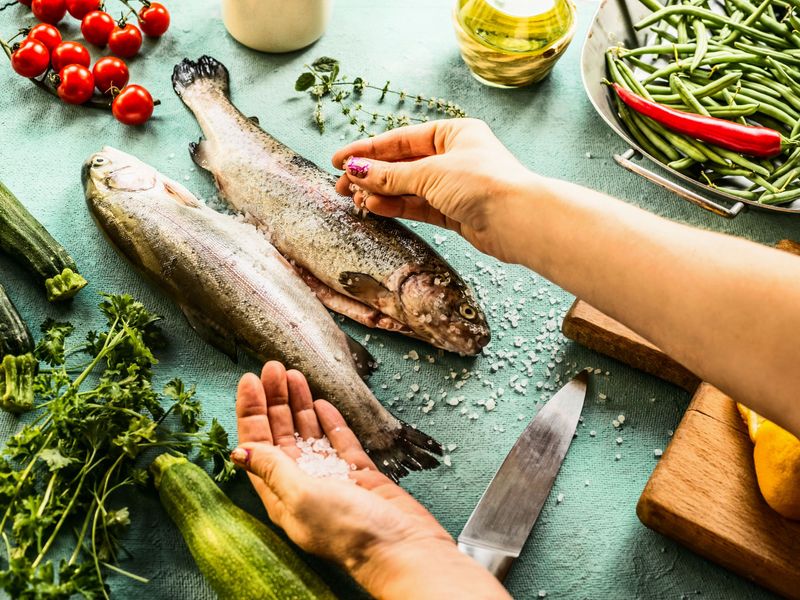
Seasoning as you go is a secret to building depth and complexity in your dishes. Adding a pinch of salt or a sprinkle of herbs at various stages layers flavors, allowing them to meld harmoniously.
This approach prevents the final result from tasting overly salty, as each ingredient contributes its essence. By seasoning incrementally, you control the flavor development precisely.
It transforms ordinary meals into extraordinary experiences, making every bite a delight. Embrace this subtle art to elevate your culinary creations, ensuring every dish is bursting with well-rounded flavors.
5. Taste constantly

Your taste buds are your most trusted kitchen allies. Tasting constantly throughout the cooking process allows you to make adjustments, ensuring your dish is perfectly balanced.
By sampling your creation at different stages, you can adjust seasoning, tweak flavors, and refine textures. This dynamic process helps avoid surprises at the table and enhances your confidence as a cook.
Trusting your palate transforms cooking into a creative and intuitive exercise, where each decision shapes the final masterpiece. Relish the journey of taste as you craft unforgettable meals.
6. Sharp knives are safer than dull ones
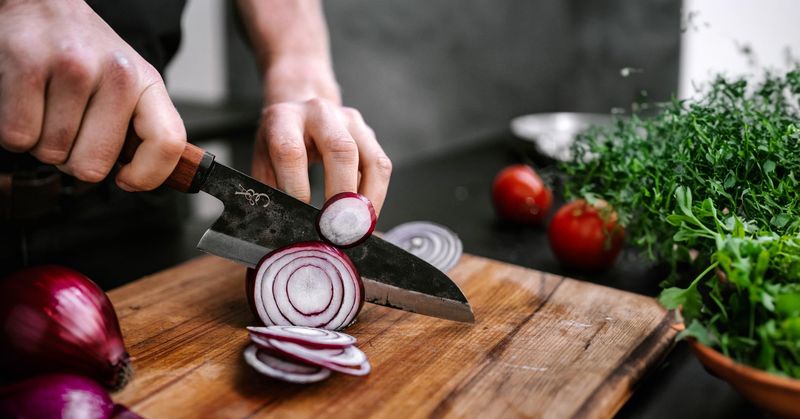
Sharp knives are not just a tool of precision, but a means to safety in the kitchen. A sharp blade cuts cleanly and easily, reducing the risk of slips that can occur with dull knives.
When a knife struggles to cut, it requires additional force, increasing the likelihood of losing control and potentially causing injury. In contrast, a sharp knife glides through food effortlessly, providing accuracy and confidence.
Investing in a good knife sharpener or honing steel keeps your tools in top condition, ensuring your kitchen is both efficient and safe.
7. Let meat rest before cutting
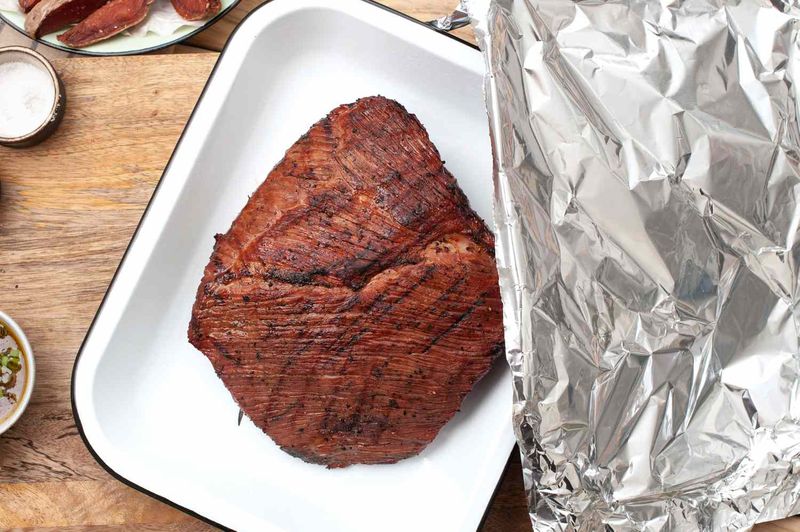
Patience is key when handling meats. Allowing meat to rest before cutting keeps it tender and flavorful. As meat cooks, its juices move towards the surface; resting time allows them to redistribute.
Cutting into meat immediately can lead to a loss of these precious juices, resulting in drier, less flavorful dishes. By letting it rest, you ensure that each bite is juicy and satisfying.
This simple act of restraint enhances the overall dining experience, highlighting the natural flavor and tenderness of the meat. A little patience goes a long way in the kitchen.
8. Use a microplane for garlic, ginger, and citrus zest
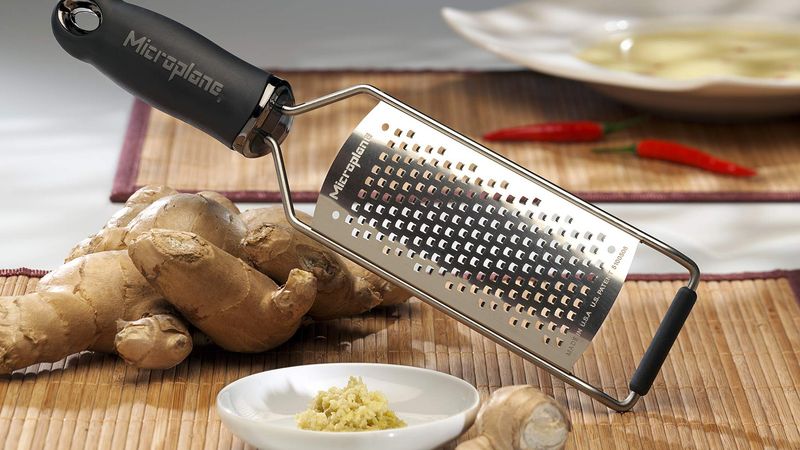
A microplane is a versatile and essential tool in any kitchen. It effortlessly transforms garlic, ginger, and citrus zest into fine, aromatic shreds, enhancing both texture and flavor in dishes.
Grating these ingredients allows for a more even distribution, ensuring subtle notes in every bite without overpowering. It saves time and eliminates the hassle of chopping or mincing by hand.
This tool is a game-changer for sauces, marinades, and dressings, making it indispensable for any home cook looking to elevate their culinary creations with minimal effort. Embrace the microplane magic.
9. Save pasta water
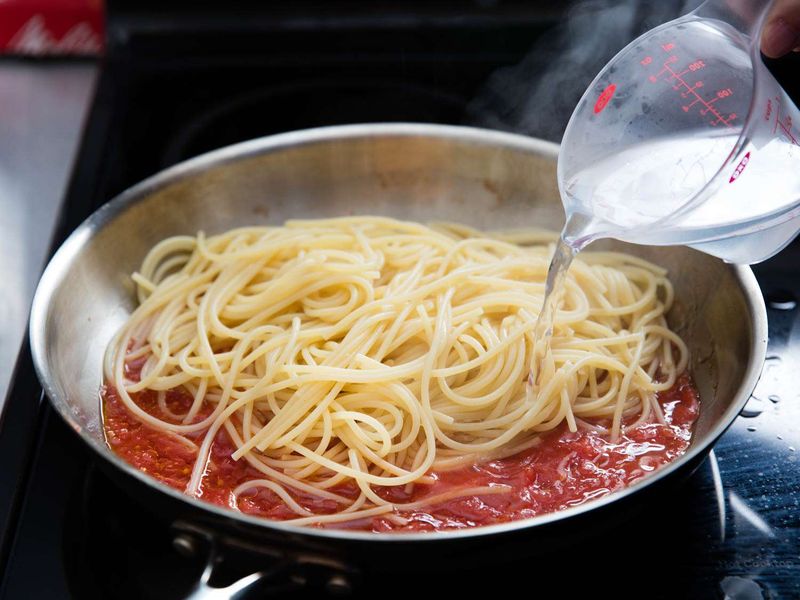
The starchy water left behind after boiling pasta is a secret weapon for creating silky, cohesive sauces. As pasta cooks, it releases starch into the water, which can be used to emulsify sauces.
Adding a splash of pasta water to your sauce helps it cling to the noodles, creating a luscious, restaurant-quality finish. It’s especially beneficial for oil or cheese-based sauces.
This humble liquid transforms dishes, turning simple pasta meals into gourmet experiences. It’s a culinary trick that maximizes flavor and texture, making every pasta dish a masterpiece.
10. Clean as you go

Keeping a clean workspace is more than just aesthetics; it fosters efficiency and focus. Cleaning as you cook minimizes chaos and makes the entire process smoother and more enjoyable.
By tidying up along the way, you reduce the daunting task of post-cooking cleanup. This habit encourages organization, allowing you to concentrate on crafting delicious dishes.
A neat kitchen cultivates a calming environment where creativity can flourish. Embrace this practice to enhance your cooking experience, turning chores into a seamless part of your culinary journey.
11. Dry your protein before searing
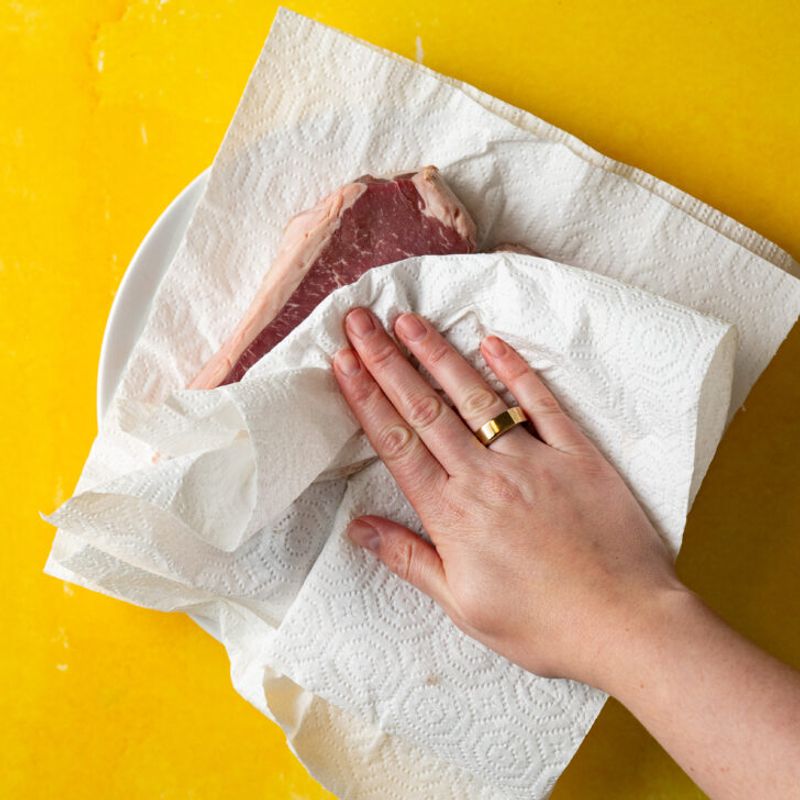
For a perfect sear, drying your protein is essential. Moisture on the surface of meat creates steam when it hits a hot pan, preventing the beautiful crust that searing is known for.
By patting your protein dry with a paper towel, you allow it to brown evenly, developing rich, complex flavors. This technique is crucial for achieving a restaurant-quality finish.
A well-seared piece of protein becomes the star of the meal, showcasing a wonderful contrast between a crispy exterior and a tender interior. It’s a small step with big flavor rewards.
12. Use the right cutting board
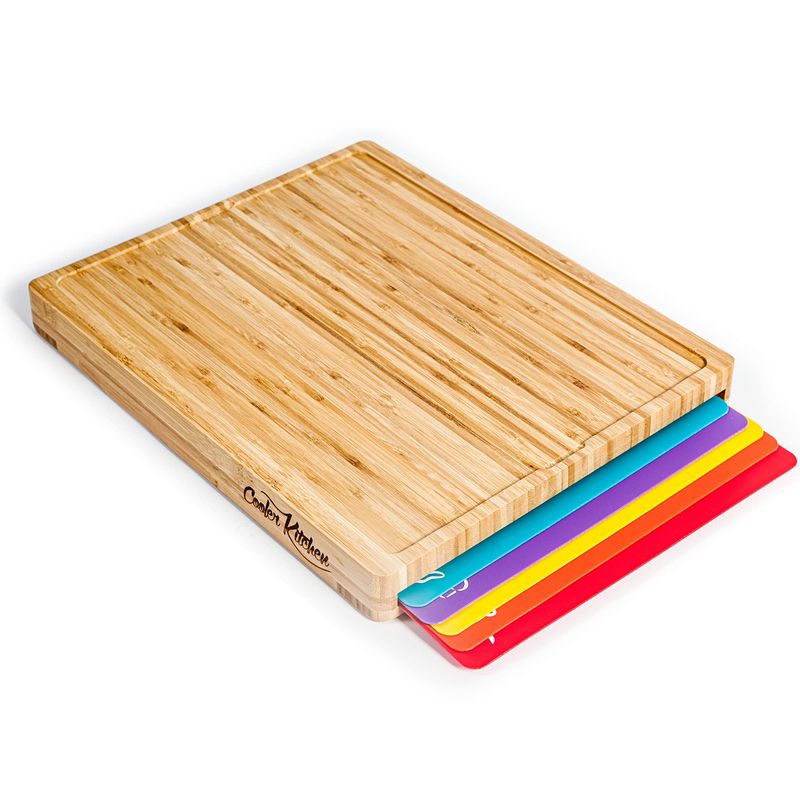
Choosing the right cutting board can prevent cross-contamination and enhance your cooking efficiency. Wooden boards are ideal for fruits and vegetables, while plastic boards are recommended for raw meats.
Color-coding your boards further reduces the risk of cross-contamination, keeping your kitchen safer. The right board choice not only protects your health but also prolongs the life of your knives.
Investing in quality cutting boards ensures they withstand the rigors of frequent use, becoming trusted companions in your culinary adventures. This simple decision supports both safety and precision in the kitchen.
13. Let your ingredients come to room temperature before baking
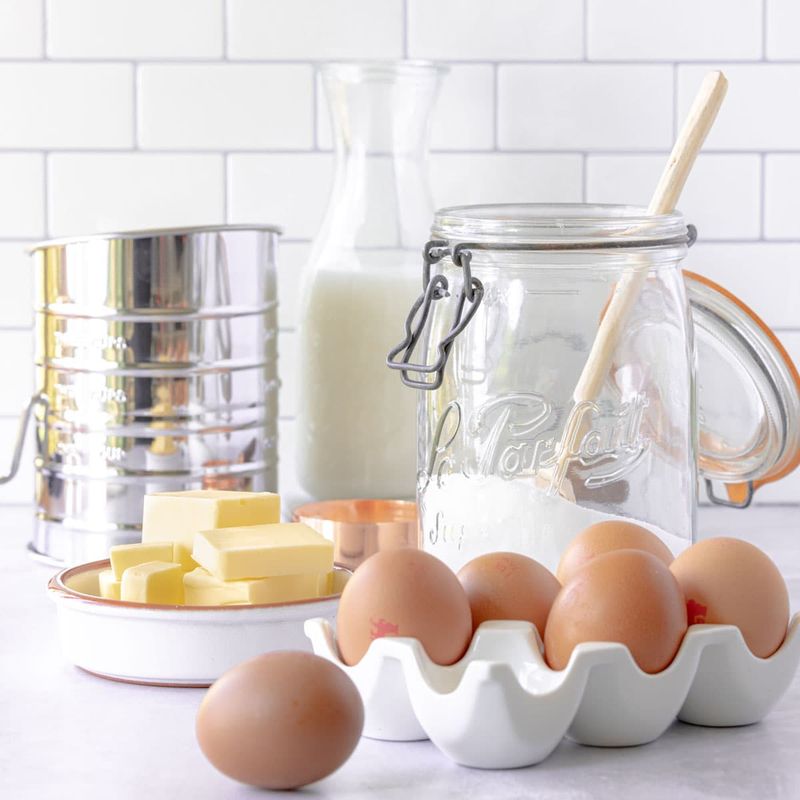
Bringing ingredients to room temperature before baking is key to achieving the perfect texture in your baked goods. This practice ensures even mixing and proper incorporation of ingredients.
Cold ingredients, like butter or eggs, can create uneven textures in cakes and cookies, affecting the overall quality. By allowing ingredients to warm up, you promote a smooth, homogeneous batter.
This step is essential for consistency, making your baking endeavors more successful. Your patience and attention to detail result in treats with the right crumb, flavor, and appeal, delighting all who taste them.
14. Finish pasta in the sauce
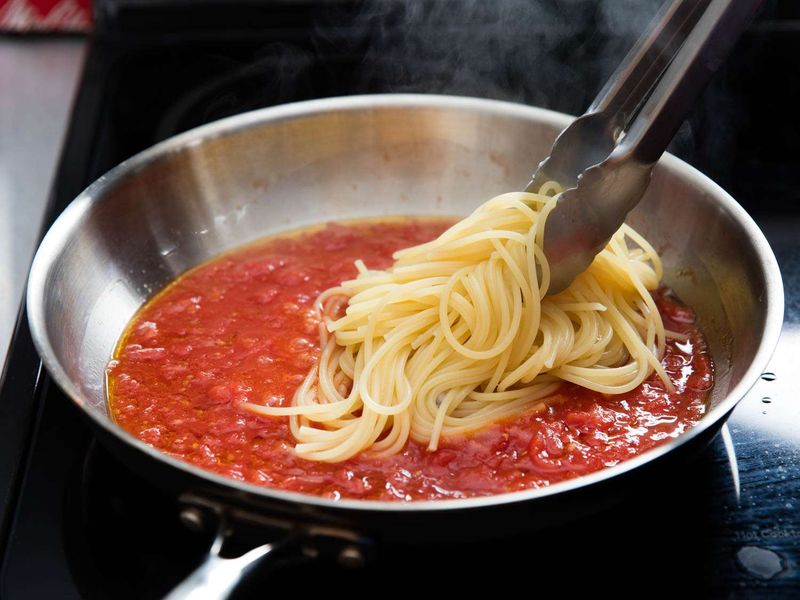
For pasta dishes that sing with flavor, finish cooking the pasta in its sauce. This allows the noodles to absorb the sauce, creating a harmonious blend of flavors.
The process of cooking pasta and sauce together for the last few minutes enhances the dish’s depth, as the pasta takes on the essence of the sauce. This technique is especially effective for thick or chunky sauces.
The result is a cohesive dish where every bite is infused with taste, proving that the fusion of pasta and sauce is more than the sum of its parts. Enjoy a culinary symphony with each forkful.
15. Don’t overmix baked goods
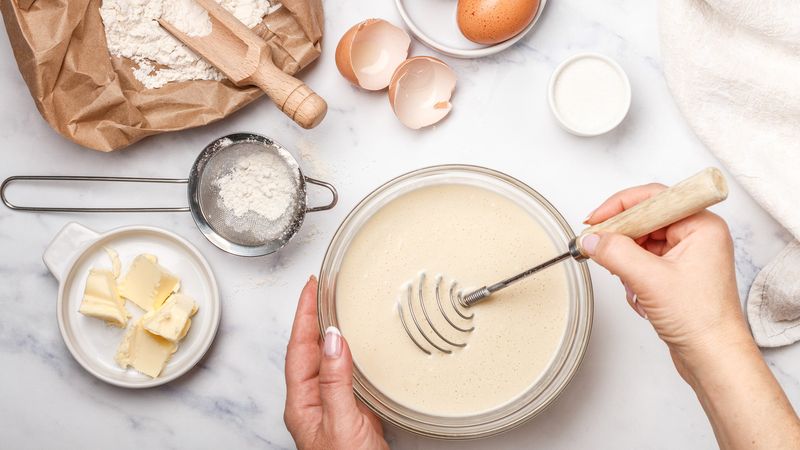
Overmixing can be the nemesis of tender cakes and cookies. It activates gluten in the flour, leading to tough and dense baked goods.
To maintain a light and airy texture, mix your batters just until the ingredients are combined. Each stroke should be deliberate, preserving the delicate structure that results in melt-in-your-mouth treats.
This gentle approach is the secret to achieving bakery-quality results at home. By embracing a mindful mixing technique, you can avoid the pitfalls of overmixing, delivering delicious confections that delight the senses.
16. Use a thermometer for meat
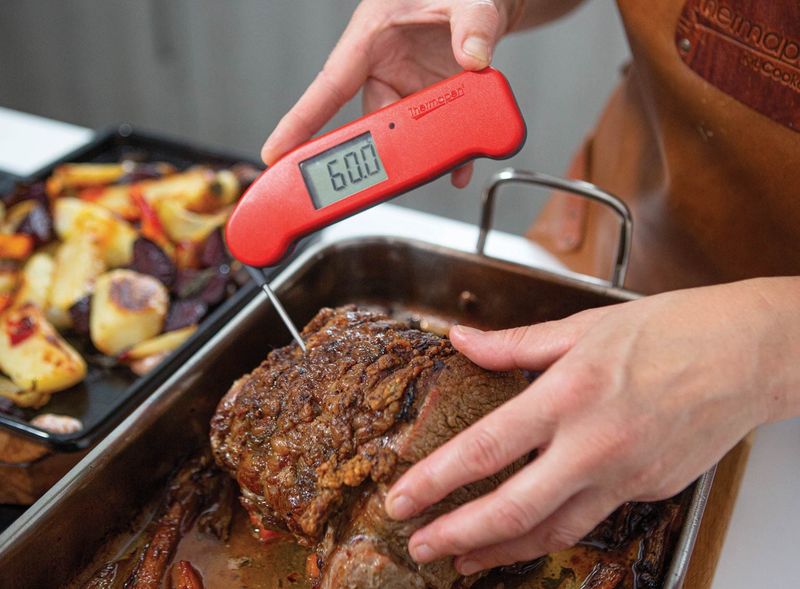
Precision is paramount when cooking meat, and a thermometer is your best ally. It provides exact internal temperatures, taking the guesswork out of doneness.
Using a thermometer ensures that meats are cooked safely, eliminating the risk of undercooked or overcooked meals. It’s particularly useful for large cuts like roasts and poultry.
This tool empowers you to create perfectly cooked dishes consistently, enhancing both flavor and texture. The confidence of knowing when your meat is just right turns cooking into an enjoyable experience, rewarding you with culinary success.
17. Freeze leftovers flat in zip-top bags
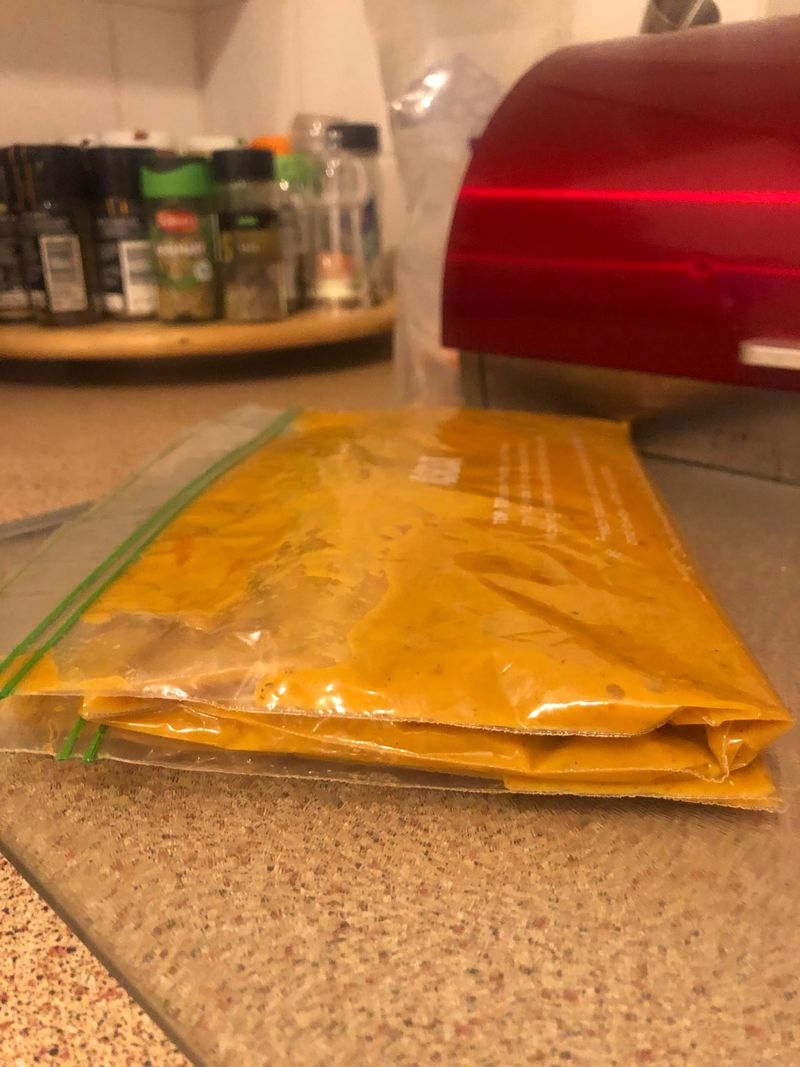
Maximize freezer space and efficiency by freezing leftovers flat in zip-top bags. This method allows for quicker freezing and thawing, preserving the quality of the food.
By laying bags flat, you create stackable portions that are easy to store and access. Labeling and dating them adds another layer of organization, preventing mystery meals.
This technique is a game-changer for meal planning, making it simple to rotate through leftovers without waste. Convenience meets practicality, ensuring that your freezer becomes a well-organized ally in your culinary journey.
18. Toast your spices and nuts
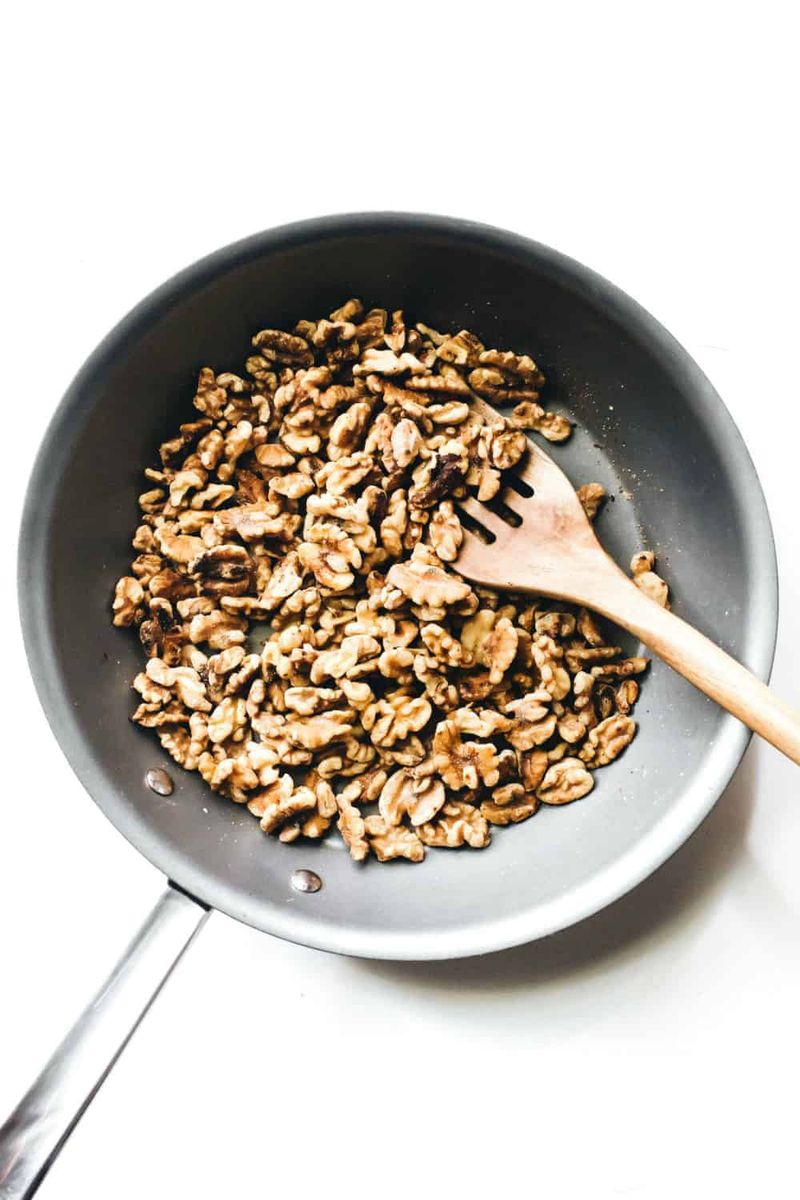
Toasting spices and nuts unlocks their full flavor potential, adding depth to your dishes. A few minutes in a dry pan can enhance their natural oils and fragrances.
This simple act can transform the ordinary into the extraordinary, imbuing your meals with layers of complexity. Toasting intensifies the taste, making your culinary creations more vibrant and memorable.
Embrace this technique to elevate your dishes, whether you’re preparing a savory main or a sweet dessert. The toasty aroma that fills your kitchen is the prelude to an unforgettable dining experience.
19. Use acid to brighten a dish
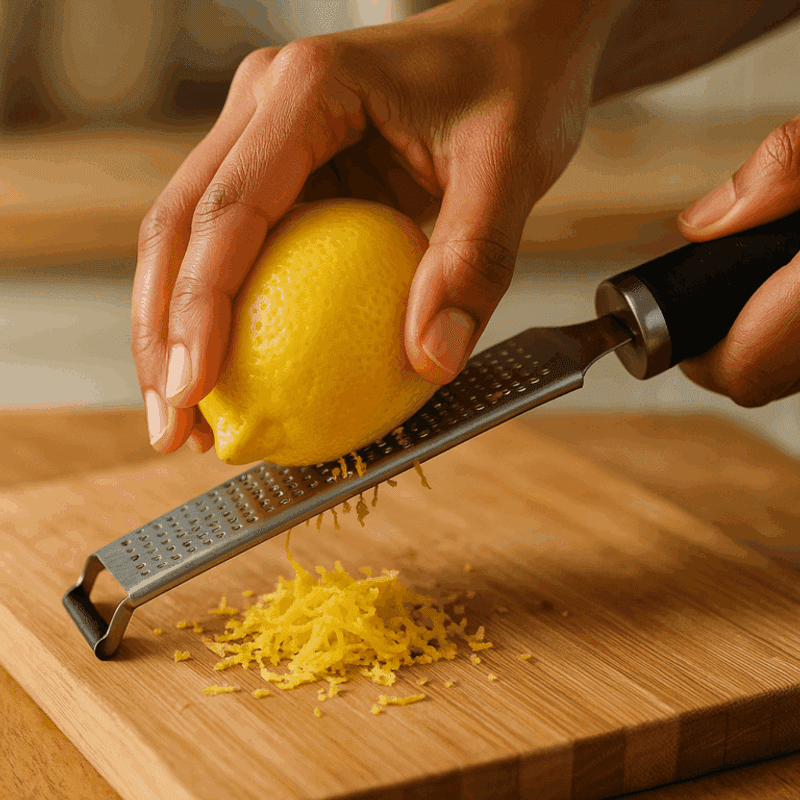
A splash of lemon juice or a dash of vinegar can invigorate a dish, adding brightness and complexity. Acid acts as a flavor enhancer, balancing richness and elevating flavors.
This technique is especially useful for soups, stews, and sauces that need a lift. The right amount of acid can transform a flat-tasting dish into a vibrant culinary experience.
Experimenting with different acids, such as citrus or vinegar, allows you to tailor the flavor profile to your liking, creating dishes that are both dynamic and delightful. Let acid be your secret weapon in the kitchen.
20. Rest dough in the fridge when you can
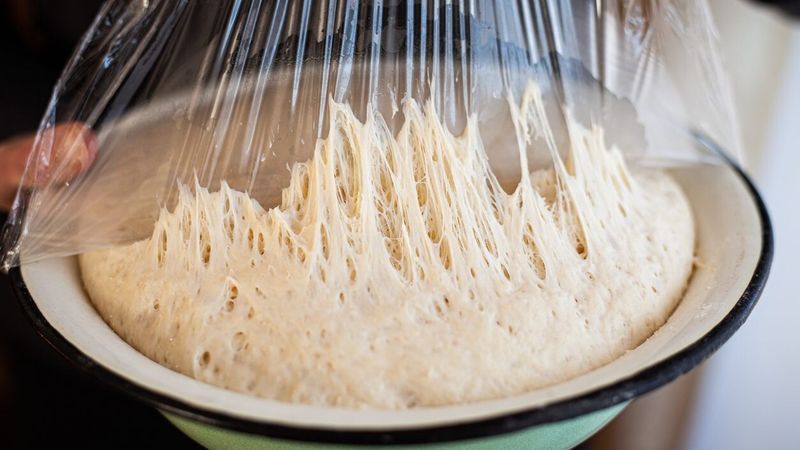
Resting dough in the fridge is a step that enhances both flavor and texture. The cool environment allows dough to develop, resulting in a better rise and crumb.
Chilling dough enables flavors to meld, yielding baked goods that are more complex and satisfying. It’s a crucial step for cookies, pastries, and bread.
By exercising patience and allowing dough the time to rest, you elevate your baking results, creating treats that impress with their taste and texture. This mindful practice is a testament to the art of baking excellence.
21. Use a bench scraper to transfer chopped ingredients
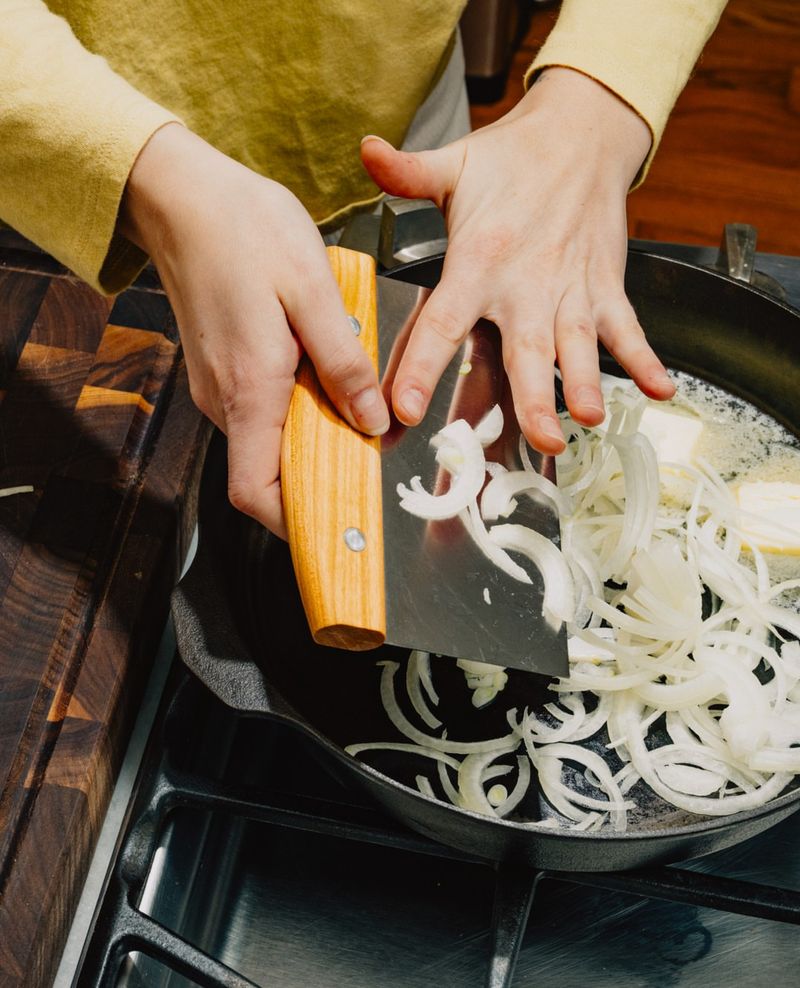
A bench scraper is a humble yet invaluable kitchen tool for transferring chopped ingredients. It makes the process neater and more efficient, reducing spills and waste.
With its wide, flat surface, a bench scraper gathers ingredients quickly, sparing your knife blade from unnecessary wear. This tool enhances both safety and precision.
Whether you’re moving diced onions to a pan or collecting herbs for a garnish, a bench scraper’s versatility shines. Make it a staple in your kitchen arsenal to streamline your cooking process and maintain a tidy workspace.
22. Keep butter in the freezer for flaky pastry
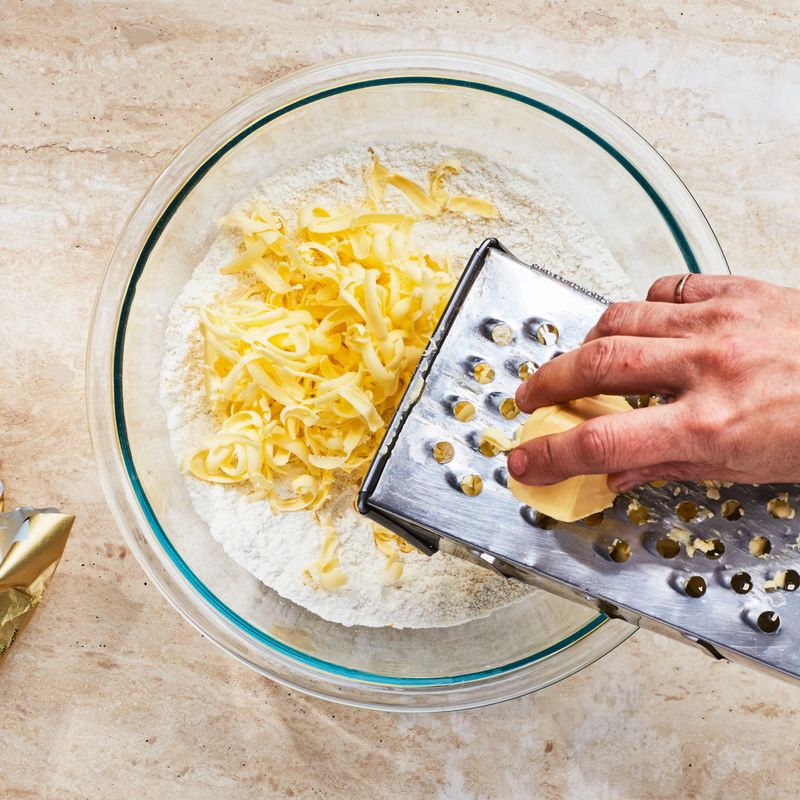
Cold butter is key to achieving the perfect flakiness in pastry. Keeping butter in the freezer ensures it remains cold throughout the baking process, creating layers in biscuits and scones.
As cold butter melts in the oven, it releases steam, forming pockets that result in a light, flaky texture. This is crucial for pie crusts and puff pastries.
By planning ahead and keeping butter chilled, you set the stage for pastry success. This simple technique transforms baking into a delightful endeavor, yielding treats that are both visually appealing and deliciously flaky.
23. Batch chop vegetables for the week
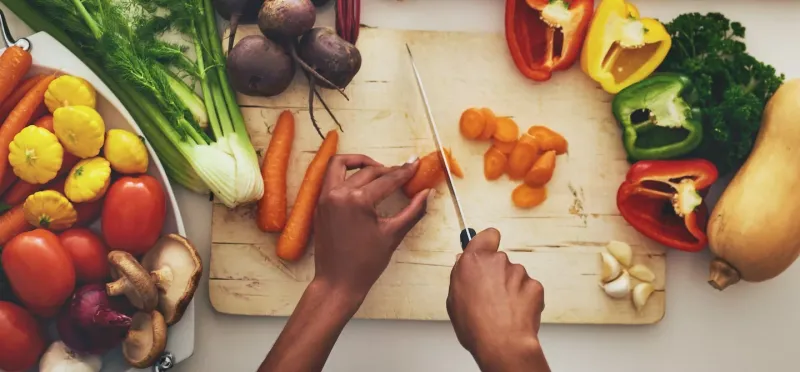
Batch chopping vegetables is a time-saving strategy that prepares you for the week ahead. By dedicating time to prep, you streamline meal preparation, making healthy eating more accessible.
Having pre-chopped vegetables on hand reduces prep time during busy weekdays, encouraging wholesome meals without the stress. This approach supports meal planning and reduces the temptation of takeout.
Embrace the organization and foresight of batch chopping to foster a kitchen environment that promotes efficiency and creativity. Your future self will thank you for the convenience and ease it brings to your culinary routine.
24. Soak onions in water to mellow their bite
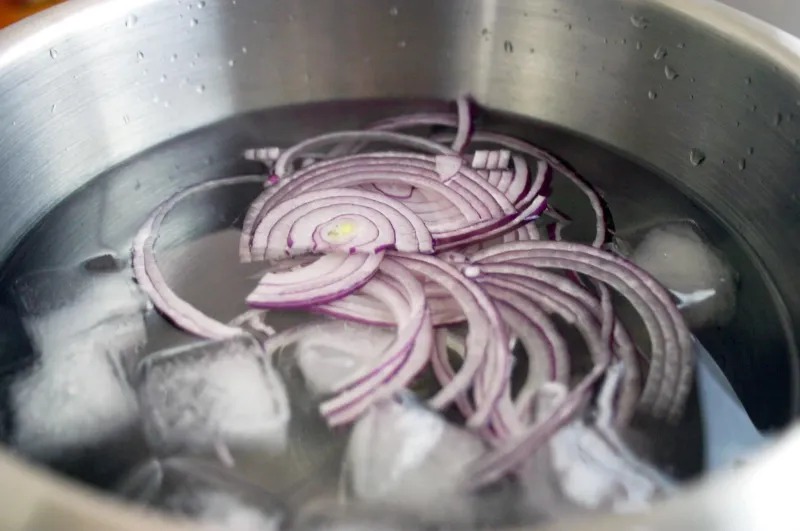
For those sensitive to the sharpness of raw onions, soaking them in water can mellow their bite. This simple technique transforms onions, making them palatable for salads and sandwiches.
By soaking, the sulfur compounds responsible for the pungency are reduced, resulting in a milder, sweeter flavor. This allows the onions to complement rather than overpower a dish.
Incorporate this method into your kitchen routine to enhance the versatility of onions, adding depth without overwhelming. It’s a subtle adjustment with a significant impact on flavor balance.
25. Use parchment paper or silicone mats for baking
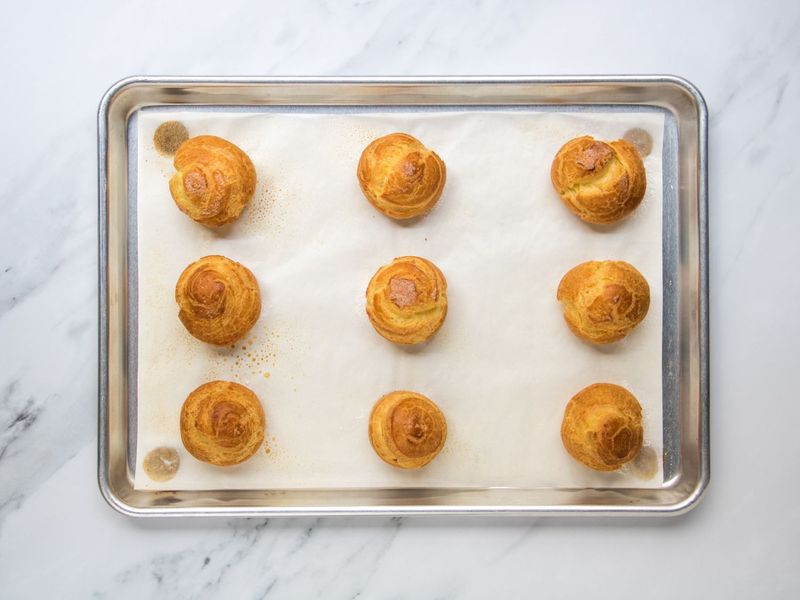
Lining your baking trays with parchment paper or silicone mats prevents sticking and promotes even baking. This simple addition ensures that baked goods release effortlessly, maintaining their appearance.
These liners also reduce the need for excess butter or oil, promoting a healthier cooking method. They’re reusable and environmentally friendly, making them a sustainable choice.
By incorporating these tools, you streamline the baking process, turning out professional-quality results with ease. Enjoy the convenience and reliability they bring, making baking a joyous and mess-free experience.
26. Label and date your freezer items
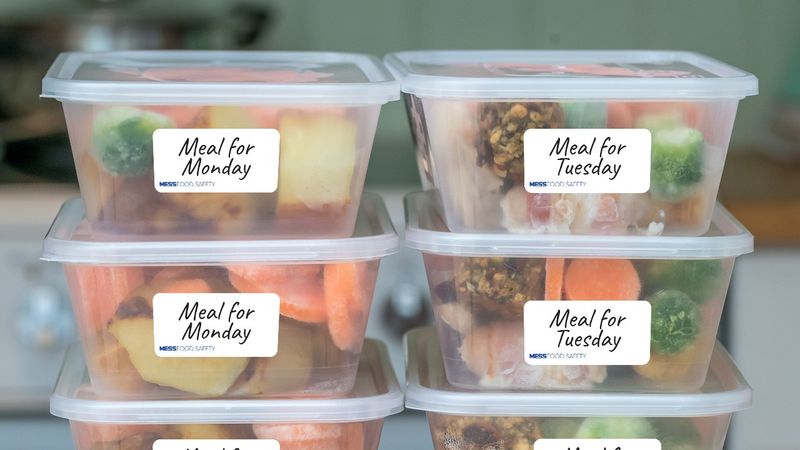
Labeling and dating your freezer items is an organizational game-changer. This habit prevents the all-too-common problem of discovering forgotten mystery meals.
Clear labels keep your freezer contents accessible and reduce food waste. Knowing exactly what’s inside and when it was stored allows for efficient meal planning and rotation.
Embrace this practice to maintain a systematic kitchen, where every item has its place and purpose. It’s a small effort with significant rewards, ensuring your freezer remains an ally in your culinary pursuits.
27. Store herbs with a damp paper towel in a zip-top bag
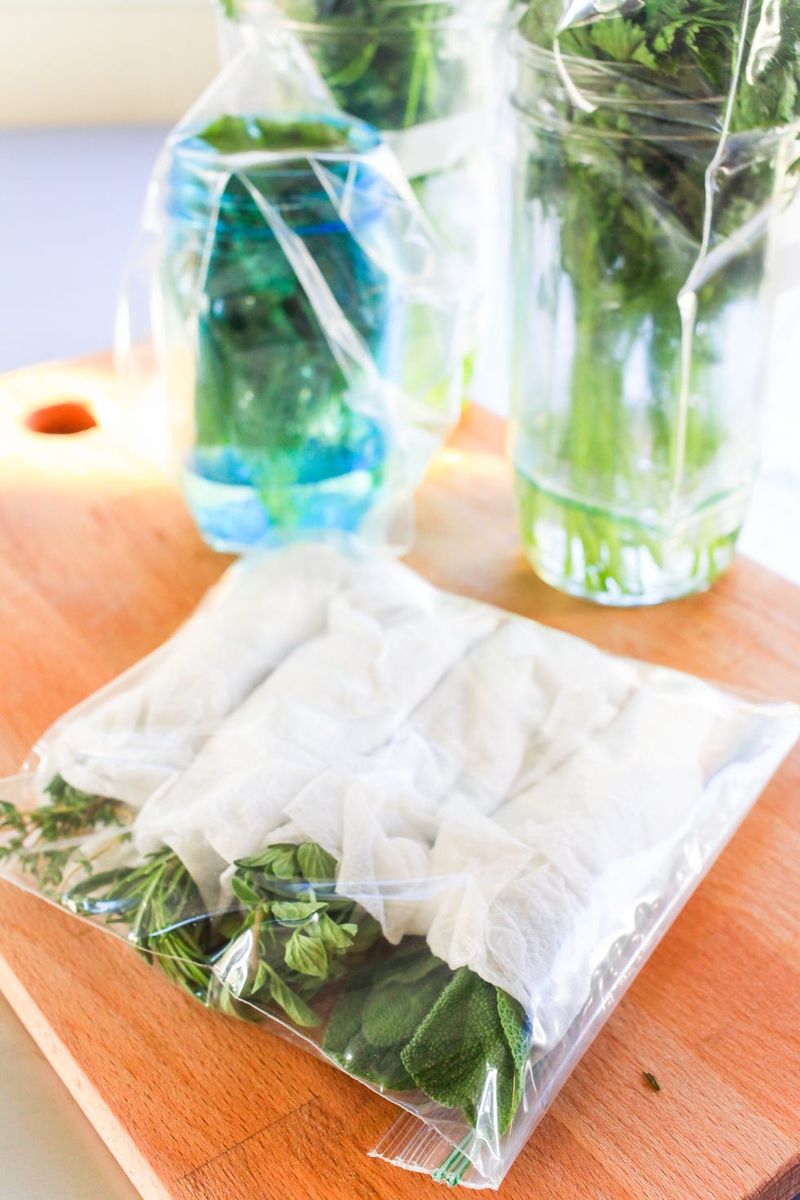
To extend the life of fresh herbs, store them with a damp paper towel in a zip-top bag. This method creates a humid environment, preventing wilting and keeping herbs vibrant.
The damp towel provides the necessary moisture, while the bag protects the herbs from exposure to air. This technique preserves their flavor and aroma for longer.
Incorporate this storage method into your routine to enjoy fresh herbs that elevate your dishes. It’s a simple yet effective way to enhance the quality and flavor of your meals.
28. Crack eggs into a bowl, not directly into the pan or batter
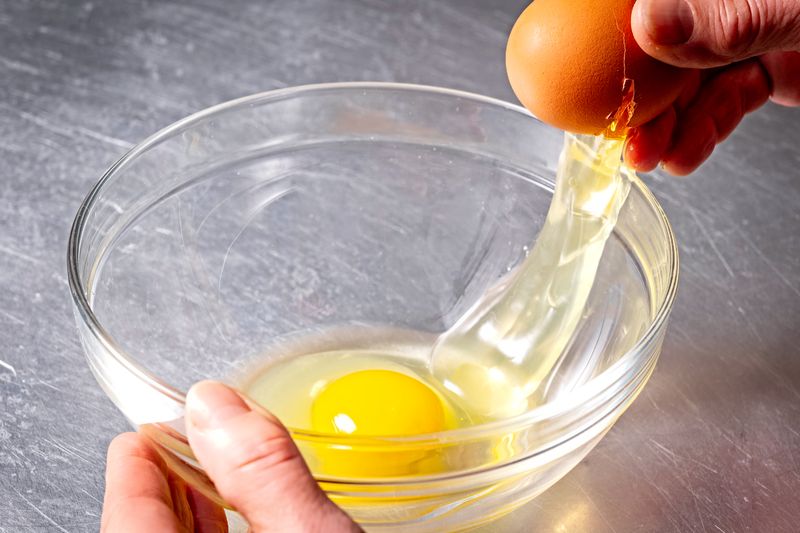
Cracking eggs into a bowl first is a precautionary measure that ensures shell-free dishes. This step allows for easy removal of any fragments before adding eggs to your recipe.
It also provides an opportunity to check the egg’s quality, avoiding potential spoilage surprises. By taking this extra step, you uphold the integrity of your dish.
This practice is especially useful in baking, where precision matters. A few moments of caution lead to flawless execution, making your culinary creations shine with professionalism and care.
29. Freeze leftover wine or broth in cubes

Transform leftover wine or broth into culinary gold by freezing them in ice cube trays. These handy cubes are perfect for deglazing pans or enhancing sauces on the fly.
Portioned for convenience, they allow you to add a pop of flavor without opening a new bottle or carton. It’s an efficient way to reduce waste and maximize resources.
Embrace this method to keep your kitchen stocked with flavor-enhancing tools, ready at a moment’s notice. Your meals will benefit from the depth and richness they bring, turning everyday dishes into gourmet delights.
30. Don’t be afraid to experiment
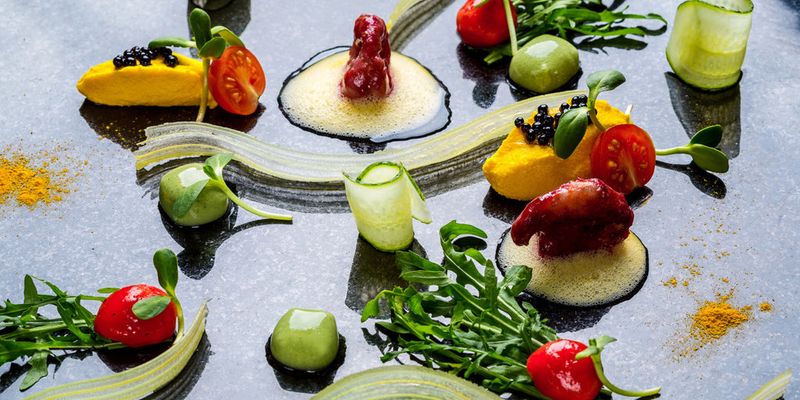
Embrace the spirit of experimentation in your kitchen adventures. Allowing creativity to guide you can lead to unexpected culinary triumphs.
Trust your instincts as you mix flavors and textures, discovering combinations that excite your palate. This fearlessness fosters innovation, turning ordinary meals into extraordinary experiences.
Experimenting encourages learning and growth, making cooking an ever-evolving journey. Dare to break the mold, knowing that each attempt is a step towards mastery. Your kitchen is a canvas, and you are the artist—a reminder that the best dishes often start with curiosity and imagination.
